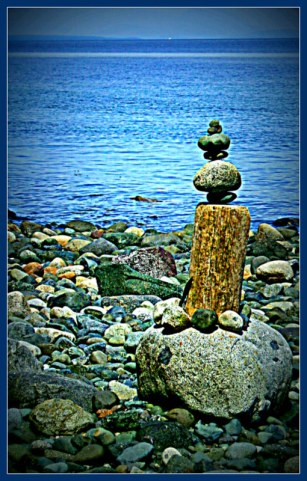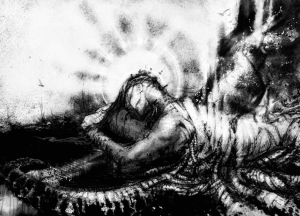
I have come across them on an ocean shore, on top of a mountain, beside a river; a stack of uncut native stones balanced upon each other, often forming a manlike figure. They are called inuksuk, meaning “in the likeness of a human” in the Inuit language. On a forbidding, often featureless northern landscape, these rough stone sculptures were a welcome sight for searching travelers. Originally used by the arctic dwelling Inuit for communication and survival, the inuksuk is a traditional monument, saying “someone was here” or “you are on the right path”.
An even earlier civilization used standing stones as monuments, not by their own decision but at the command of the Lord God. In Joshua 3, the Israelites came to the Jordan River where Joshua conveyed God’s instructions to the Levite priests carrying the ark of the covenant. They were to step into the water and lead the people to the other side. This was no meandering stream but a river at flood stage, swift and deep. Obediently they took their first step, then watched in wonder as the waters mounded high on either side of a dry path opening up across the riverbed. “The priests who carried the ark of the covenant of the Lord stood firm on dry ground in the middle of the Jordan, while all Israel passed by until the whole nation had completed the crossing on dry ground.” (Joshua 3:17 NIV)
For the second time in their exodus from Egypt God had parted the waters miraculously before the Israelites. He wanted them to remember, so through their leader, Joshua, He instructed a man from each of the twelve tribes to carry a stone from the middle of the Jordan and set them up together as a monument. “Joshua said to the Israelites, “In the future when your descendants ask their fathers, ‘What do these stones mean?’ tell them, ‘The Lord your God did to the Jordan just what He had done to the Red Sea when He dried it up before us until we had crossed over. He did this so that all the peoples of the earth might know that the hand of the Lord is powerful and so that you might always worship the Lord your God.” (Joshua 4:21-24)
I have standing stones in my life. Not actual stones but figurative markers on my lifeline indicating where God has done mighty things. When I am asked, “What do these stones mean?“, I will speak about a barnacle-covered beach stone at the seaside bible camp where he made me His own. The place where tears wet a crumbling altar of broken vows and health is where everything was lost so I could come to know the Love I could not lose. I will gladly describe the obelisk pointing skyward where He knit my life back together in a new place, grounding me with love and purpose. Each beauty sketched in sky and landscape, creature and person, places a pebble in the monument of my worship of Christ who is worthy of all honor and adoration, the Living Stone.
“Come to Him — the living stone — who was rejected by people but accepted by God as chosen and precious. Like living stones, let yourselves be assembled into a spiritual house, a holy order of priests who offer up spiritual sacrifices that will be acceptable to God through Jesus the Anointed.” (1 Peter 2:4-5 The Voice)

